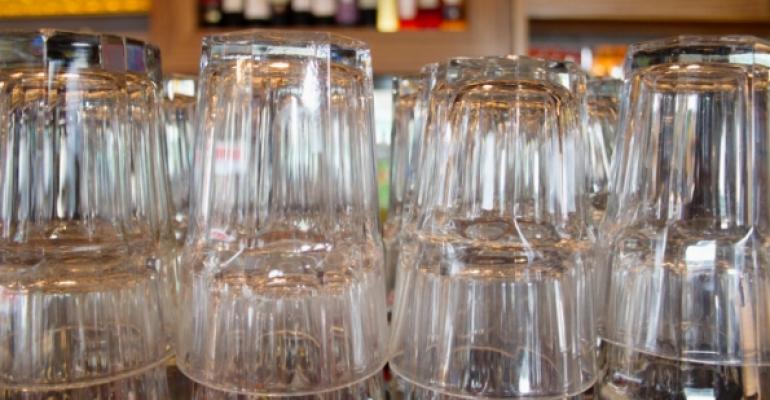
I would never refer to myself as a fashion guy. But having a go-to suit is essential, so every five years or so, I drag myself to the store to “shop” — a word that excites many, but simply sends shivers down my spine.
I recently went on such a foray and had an experience that was uplifting. I walked into the store, merely intending to browse and mindlessly shuffle hangers from side to side, but instead, found myself joyously walking out an hour later with a beautiful new suit, a dress shirt, three ties, and a pocket square. The reason? It was because of the skilled salesman who ushered me through the experience with confidence, skill and understanding — not unlike a great bartender or server.
He explained the ins and outs of a world foreign to me, and I left trusting him and feeling like I had my own fashion confidante who showed me the ropes. And he said something that stuck with me: “You know, very few people recognize the fine details of a nice suit, but for those that know this world, they instantly notice everything. For them, it’s all about the detail. And for the others, they simply know it’s a beautiful suit. So you win with everyone.”
That got me thinking about the power of the almost unnoticeable details. For restaurants and bars, there’s layer upon layer of them, again and again. Glassware, in particular, has such an often unconscious sway over someone’s dining experience. Whether the diners notice it or not, the glass that is served tells them much about the restaurant’s concept and the skill level of the beverage team, and has the power to make an often confusing world fun and accessible. The options for great glasses are endless, so how does an operator truly harness the power of these tools to enhance the guest experience?
“For me, the glassware is essential to the dining experience,” said Amanda Reed, beverage director for Heartwood Provisions, which is set to open this winter in downtown Seattle. Reed recently went through the process of selecting glasses for the new concept and looked at more than 200 options, from elaborate Martini glasses that made her “cringe” to those with oversized bowls or stems that just didn’t feel right in her hand. “I look for elegant stemware that has clean lines and isn't bulky,” she said. “I find myself often using the term ‘sexy’ when glassware has all the right stuff.”
Reed was, in fact, so unhappy with many of the options available from local suppliers that she ended up sourcing cocktail glasses from a specialty online store based on the East coast. Since Heartwood will be offering suggested cocktail pairings, having the perfect glass is essential for the experience to be “right in line with the concept,” she said.
Today’s glassware options can indeed be dizzying. With many companies touting the benefits of different wine glasses for each varietal or style-specific beer glasses, one could end up stocking dozens and dozens of different vessels, causing headaches for the staff and confusion for the guests. So at the root of the decision process should be some very specific guideposts steering the selection.
“First, consider the beverages you're serving at the restaurant,” said Christine Wright, general manager and wine director at Hearth restaurant in New York City. “We have over 900 wines in our cellar, so it’s nice to be able to serve a wine in a glass that's appropriate for it,” she said.
Wright stocks seven types of wine glass, ranging from Champagne to fortified, but “Hearth is a relatively large restaurant with enough space to store glassware properly,” she said. Smaller or more casual venues might choose fewer stemware options.
Wright said she analyzes the look and feel of each glass to ensure it has the potential to “elevate the beverage being served in it.”
The glassware must also “fit the vibe of the restaurant,” she said. That last criterion can be the most challenging, but it also can have the most profound effect on the guest experience, she said.
Guests will often not outwardly notice how seamlessly the silverware, plateware and glasses combine to form something unique, but they can feel it. A former owner I worked for once described this as “if everything is in its place, clean and well chosen, it will immediately put the guest at ease. They may not know exactly what’s causing it, but they will sense the harmony.”
For Sother Teague, beverage director at Amor y Amargo — an intimate cocktail bar in New York City that focuses on bitters — driving home the concept of the bar is key.
“Everything you do should link back to your vision and ethos. This especially includes glassware,” he said.
That doesn’t mean you need a wide variety. On the contrary, Teague offers a grand total of two glasses at his bar, including the water glass.
“We have a single, six-and-a-half ounce rocks glass for all cocktails, on the rocks or up, and a nine-and-a-half ounce water glass for any long drinks. We run a very clean and simple program; the glassware is just an extension of that sentiment,” he said.
More nuances of glassware
As with noticing the details of a fine suit, skilled beverage professionals and experienced customers have a keen eye for glassware, and make quick assessments about the character of an operation.
Wright described it this way: “If you order a bottle of Nebbiolo, what happens after that tells you, to some extent, how serious the place is about their beverage program. If I am served my Nebbiolo in proper Burgundy-Bowl glasses, I will immediately know that the restaurant cares enough to stock proper glassware for the wine they serve, and that the server has been taught which wines go in which glasses.”
In addition to specialty glassware enhancing a particular beverage, it can also help to enhance the bottom line. Jennifer Maslanka, general manager at Spring Lounge, a New York City neighborhood bar that’s been around since the 1920s, uses a pretty straightforward set of glassware, and makes sure it’s durable enough to withstand a busy Friday night service.
But there are other nuances, too.
“Specialty glassware can increase profit margins,” she said. “There is a threshold that most places will charge for beers in my neighborhood and I’m very hesitant to charge more than that. So I use small tricks to help keep my margins in line without having to increase prices. To use beer as an example, if you have a very expensive keg, you can increase your profit margin by pouring the beer into a slightly smaller glass rather than increasing the price of the larger pour. By spending slightly less money for a slightly smaller drink, the customer is therefore more likely to order a second one.”
Maslanka emphasizes, though, that all menus should state both the price and size of the glass clearly, so as to never mislead a guest.
Once you’ve nailed down the concept of the overall bar program, having fun and pushing the boundaries can lead not only to more engagement from your staff, but also to more sales. During a wine trip to Italy, Wright became inspired by the glassware she encountered and returned home determined to find them for her bar.
“Eventually, I found these similar, tiny gold-rimmed glasses with a handle into which we pour Amaro for guests after the meal, and I've never had someone not comment on how amazing the glass is. I also have a set of 1960's Southern Comfort Old-Fashioned glasses with steamboat images on them in turquoise and gold; it just feels special when you get a Sazerac in that glass. And it's quite common that others at the table become jealous and order their own,” Wright said.
Her zeal to collect vintage glassware has grown as she’s seen their impact on the bottom line, as well as the reaction of her guests, and today stocks 15 different cocktail glasses, including tiny teacups for punch poured from vintage pitchers.

How does your restaurant or bar select glassware? Join the conversation in the comments below.
No matter what the style of your restaurant or bar, or how simple or elaborate your beverage program, practical needs must be considered, specifically available storage space, ease of service and cost. Breakage must always be considered, too, as many hands will pass over the glasses each night, so durability is an important factor. Wright, while noting the benefits of many high-end glasses, said she’d never spend more than $10 on a glass, “unless it's made out of steel and can't be broken. Come to think of it, we actually have a couple of those, too!”
There’s no denying the elated feeling of slipping into your Friday night finest. A well-tailored suit or gown immediately adds pep to one’s step. Your drinks deserve the same respect; they, too, want to slip into something that showcases them in their finest light. Take the time to select the proper glass. Your guests, your staff, and your bottom line will take notice.




